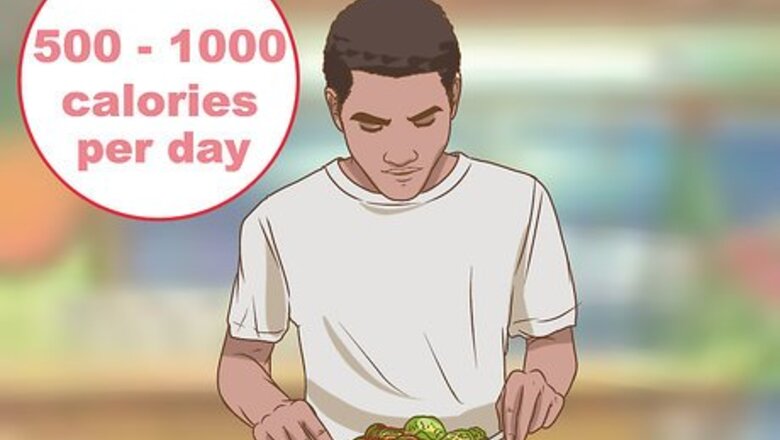
views
Eating Right to Get Bigger
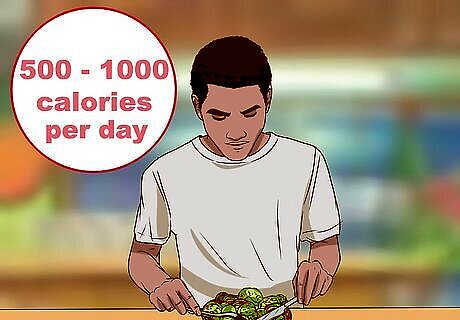
Eat more than you think you need to. Weight gain or loss is a numbers game – to put on weight, you need to consume more calories than you burn on a daily basis. This doesn’t mean go crazy with sugars and bad fats – your diet should be balanced and healthy. The best way to keep track of your calories is by recording what you eat and how much you burn. To gain weight, increase your calorie intake gradually, starting with 200-300 more calories per day. Over the course of a few weeks or a month, try to work up to 500 more calories every day. Use a notebook, app or website like MyFitnessPal to total up your day’s calories. This requires reading food labels, being meticulous about recording ingredients, and being aware of portion size. Also record what exercise you did that day and how many calories you burned (as close as possible). A surplus of 500 calories per day will help you gain 1 pound per week. A great way to add calories is by eating “good fats,” like olive oil, nuts, and flaxseed.
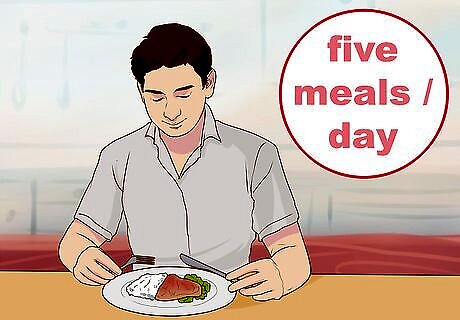
Try to eat five meals per day. The best way to time your eating is to eat consistently throughout the day. Of course, if you work or go to school, you may not find time for full sit-down meals. Keep protein-rich snacks with you between meals like almonds, raw sunflower seeds, and peanuts. You can also try to sub in a protein shake during the day between whole meals. You’ll do better spacing meals out multiple times throughout the day than trying to eat 1-2 extremely calorie-heavy meals in a sitting. Definitely do not skip breakfast. Try to include fresh fruits or vegetables, carbohydrates, and proteins in your breakfast.
Keep track of your protein intake. To put on muscle mass, try to eat at least 1.44 calories of protein per pound of your body weight. Also remember to shoot for 0.8 grams of protein per kilogram of body weight daily (about 0.36 grams per pound). For example, if you weigh 180 pounds (81.6 kg), you want to get 259 calories from protein every day. At this weight you should try to have about 64.8 grams (2.3 oz) of protein that day. Eat high-protein foods like lean meats (beef, chicken, turkey), beans, peas, lentils, hemp seeds, chia, eggs, oats, cottage cheese, milk, quinoa, tuna, and peanut butter. Your best choices for high-quality protein are beef, yogurt, milk, eggs, cheese, poultry, and fish. Try protein shakes with whey powder base. Whey is a commonly used protein supplement.

Include carbohydrates in your diet. Carbs are your body’s main source of energy, and eating them with protein can help your body turn the protein into muscle. Try to have a 2:1 or 3:1 ratio of carbs to proteins in your meals. Plan meals in advance by reading labels and using your notebook or app to track protein and carbs, as well as calories. Have fruit and veggies at every meal with a 3:1 ratio with carbs. Add carbs to your protein shake to get a great boost of both. This is great for after a workout.
Exercising to Build Muscle
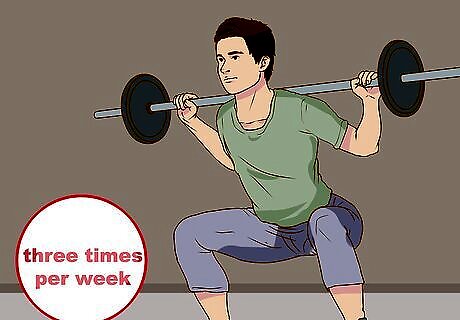
Train with weights three times per week. Getting the carbs and protein your body needs sets you up to build muscle, but in order to put those building blocks to work you have to train. There are generally two kinds of exercise: aerobic exercise like running and swimming, which gets your heart rate up, and anaerobic exercise like weight lifting – the second is what builds muscle. Aim for 3 weekly sessions of weight training; there’s no need to hit the gym every day. Start slowly so you don’t strain your muscles. Talk to your doctor before starting a new workout regimen, especially if you have any medical issues or are over 40 years old. Consider hiring a personal trainer to help you stay safe and motivated! If you go at it alone, always be safe with workout equipment. Know how any equipment works before you use it, don’t use it under the influence of drugs or alcohol. Only use as much weight as is safe for you. When pushing your limits of weight-lifting, always have a spotter.
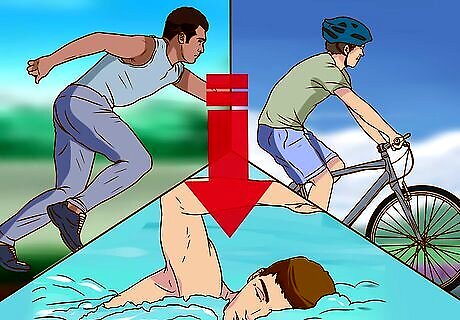
Limit your cardio. Aerobic exercise like running, biking, and swimming is great for losing weight and burning calories, which is not your goal. You don’t have to completely avoid cardio exercise, but keep it to a minimum. If you do go for a run, for instance, use a website or app to estimate how many calories you burned and try to make up for it. 150 minutes of moderate or 75 minutes of vigorous cardio per week is a good limit. If you are already active in your daily life, count that towards these values.
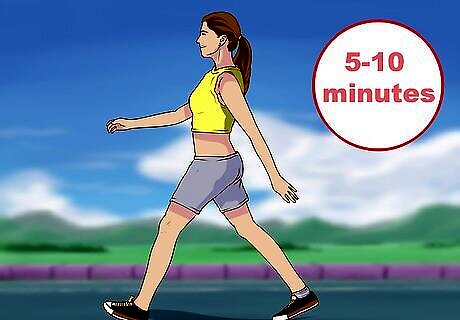
Start with a brief warm-up. Take 5-10 minutes to do a short aerobic warm-up, like fast walking or a mild jog. Warm muscles are less likely to get injured than cold muscles. This small amount of aerobic work won’t burn enough calories to be a problem. At the very least, start your anaerobic workouts with light weights to warm your muscles.
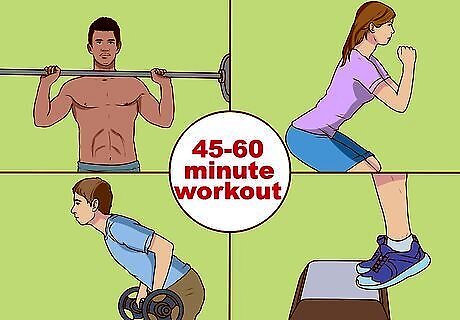
Do full-body workouts with increasingly heavy weights over time. Aim for 45-60 minute workouts, and try to target all your muscle groups. Do sets of exercises with the heaviest weight you can use safely. Try to increase your weights weekly, if you can. Focus on exercises like these (have a professional show you proper form to avoid injury): Military press Squats Deadlifts Bench press Barbell rows (while bent over) Pull-ups Chin Ups Dips Calf raises Lunges Planks
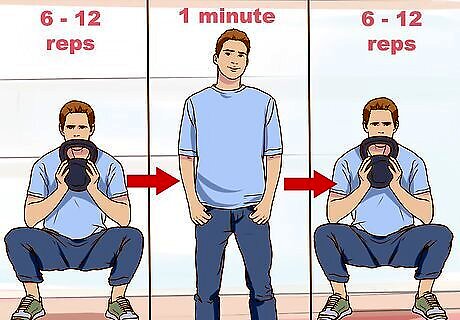
Do 6-12 reps for your workout with short rests in between sets. Ideally, try to rest for less than a minute in between your sets of reps. Don’t rest between the reps themselves. For instance, do a set of 12 reps of squats with moderately heavy weights, wait a minute, then do a set of 10 reps with slightly heavier weights, wait a minute, then do 8 reps with even slightly heavier weights. Remember not to overdo it – aim to have your last set of reps use your maximum amount of safe weights.

Give your muscles a rest. Don’t work out every day – your muscles need rest to heal and build. The healing is actually what causes muscle growth. Working out 3 days a week with days off in between is the right amount to increase muscle mass. More isn’t always better – take your rest days!
Improving Your Daily Habits
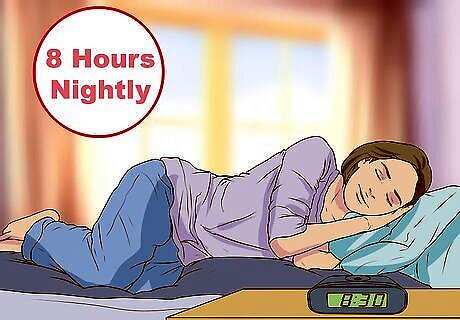
Get 8 hours of sleep or more every night. When you don’t get enough sleep, your body releases hormones that affect you in many negative ways – including building muscle. Prioritize sleep and try to get as close to 8 hours nightly as possible. While you’re sleeping is when your body gets the rest it needs to build muscle.

Make exercise part of your routine. Putting on mass requires dedication. A great way to dedicate yourself to your workouts is to set a schedule and stick to it. Get a calendar and mark which 3 days of the week you’re going to go to the gym or workout at home. Remember to reward yourself sometimes! Go to a movie or buy a new top.
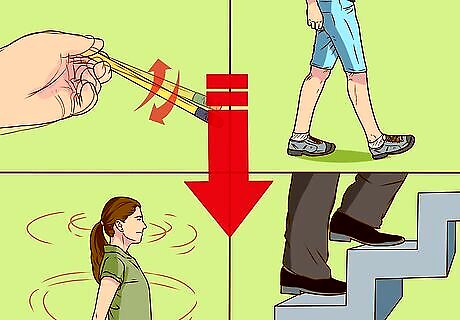
Minimize your NEAT score, if necessary. NEAT, non-exercise activity thermogenesis, is the term for all of those small daily movements and activities that may just add up as calorie-burners. Fidgeting, walking, pacing, climbing stairs – most people don’t burn many extra calories at all, but if you do these things often throughout the day, you could possibly be burning up to 2,000 extra calories daily. If you truly struggle to gain weight, pay attention to your NEAT activities – you may be able to save yourself some calories. If you pace or fidget because you’re nervous, try relaxation techniques like deep breathing exercises, or a few minutes of meditation. If your extra movements are just a habit, pay closer attention and be mindful. Sit with your feet planted firmly on the ground so you don’t tap your foot or shake your leg, and otherwise focus on keeping your body still and calm.

Be patient with yourself. Accept your body, especially if you are a teenager and are still growing. When you reach adulthood your metabolism and body shape may change. Remember that muscle gain is a slow process and takes dedication and time – keep at it, and you’ll get there!














Comments
0 comment